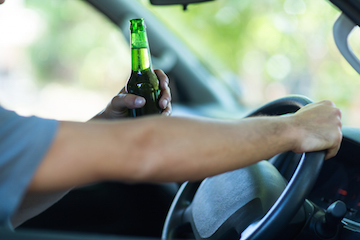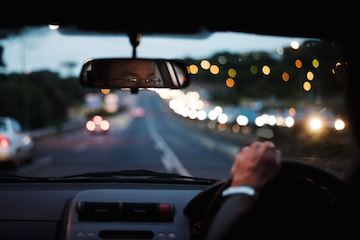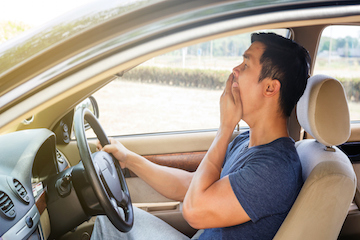Road Safety Facts
 Speeding
Speeding
Speeding is regarded as a factor in nearly one-third of all fatal crashes, therefore, it’s very important that drivers adhere to speed limits.
What are the speed limits in South Africa?
General speed limits are as follows:
- 60 km/h on a public road within an urban area
- 100 km/h on a public road outside an urban area which is not a freeway; and
- 120 km/h on every freeway.
Certain types of vehicles are required to adhere to speed limits lower than the general speed limit, for example:
- Goods vehicles with a gross vehicle mass (GVM) of more than 9t must drive at less than 80 km/h
- Certain tractors and trailers or combination vehicles may also not exceed speed limits of 35 km/h and 15 km/h based on their braking capabilities.
- Certain vehicles (minibuses, buses and goods vehicles) must stick to the speed limits imposed on tyres.
Road traffic signs can also set speed limits that may be lower or higher than the general speed limits.
Why is speeding dangerous?
Speeding is dangerous because:
- The faster you’re driving, the harder you’ll hit any obstacles (other vehicles, pedestrians, etc).
- The effectiveness of safety devices such as airbags and safety belts are severely compromised at high speed.
- It’s more difficult to avoid an accident if you’re driving at high speed.
- High speed puts a lot of strain on tyres and brakes which increases the risk of failure. This, in turn, increases the chance of an accident.
- It’s more difficult to drive at high speed. The driver has a reduced visual field and restricted peripheral vision.
You can find more information on speeding on the Arrive Alive website.
 Drunken driving
Drunken driving
Alcohol is a major factor in many accidents in South Africa, playing a part in about half of all motor vehicle-related deaths.
If you have had too much to drink, don't drive yourself home:
- Take a taxi home or use public transport.
- Let someone who hasn't been drinking drive you home.
- Stay where you are and drive home the next day.
What is the legal limit?
You may not be in the driving seat of a vehicle on a public road with the motor running if your blood-alcohol level is more than 0,05 gram per 100 millilitres.
The impact that alcohol has on behaviour differs. In general, the best advice is "Don't Drink and Drive".
Some of the factors that influence your blood-alcohol level include what alcohol you have been drinking, your mass, your strength, whether you have had anything non-alcoholic to drink, what you have eaten, whether you’ve taken medication, the temperature of the drink etc.
For more detailed information on drinking and driving, click here.
 Driving at night
Driving at night
Night driving is more difficult and dangerous than day driving because your depth perception, colour recognition and peripheral vision are compromised after sunset. Old people especially have difficulty with night driving.
To help ensure that you drive safely at night:
- Make sure that your lights are all working and are clean (headlights, taillights and signal lights. Also, check that your windows are clean.
- Make sure that your headlights are properly directed at the road - misaimed headlights can blind other drivers and reduce your ability to see the road.
- Don’t drink and drive! In addition to hampering your abilities, alcohol can make you sleepy.
- Don't smoke when you’re driving - nicotine and carbon monoxide hamper night vision.
- Turn your headlights on at twilight - it makes it easier for other people to see you.
- Reduce your speed and increase your following distances.
- Drive so that you’re able to stop within the area lit up by your headlights.
- Keep your headlights dipped when there are other vehicles in front of you or coming towards you.
- Don't allow yourself to be blinded by other people's bright lights - rather watch the side of the road, glancing ahead to check the position of the oncoming vehicle.
- Stop regularly and stretch your legs. If you get tired, stop and rest.
- If you have car trouble at night, pull off the road as much as possible and put your hazards on.
Observe night driving safety as soon as the sun goes down. Twilight is one of the most difficult times to drive because your eyes are constantly changing to adapt to the growing darkness.
 Road rage
Road rage
One way of ensuring your safety on the road is to make sure that you’re not an aggressive driver. Aggressive driving can cause accidents and can also result in incidents of road rage.
What is aggressive driving?
Aggressive driving is often demonstrated by drivers who take their anger, resentment and frustration with them behind the wheel. These attitudes can lead to crashes and nasty confrontations. Many instances of this aggressive behaviour involve drivers who cut you off, make unsafe lane changes, speed, follow too closely, run red lights, and disobey traffic signs and signals. Add to that the blaring of a hooter, angry voices shouting and rude hand gestures and you have a dangerous mix. All of these driving patterns can lead to road rage or the kind of highway madness that has drivers engaging in physical fights or using their vehicles to ram other drivers, sometimes forcing them off the road.
How to avoid aggressive driving
- Forget work or home worries, concentrate on driving. (Rather be late and arrive alive.)
- Plan your journey in advance to reduce anxiety and stress.
- Adopt a positive mental attitude.
- Play music. This can reduce stress.
- Don't try to change other drivers attitudes: you can't, you can only change your own.
- Be courteous and stay calm if provoked.
- Drive with your car doors locked and if you see trouble don't leave the safety of your vehicle.
- Count from 1-10 if you start to get angry (it's old and it works!)
- Don't retaliate by sounding your hooter, flashing your lights or gesturing, this will only aggravate the situation.
- If you’re a victim of aggression take the car's registration number and report the incident to the police.
- Drive courteously at all times: leave plenty of room when you merge, always use your indicators, keep a two-second distance between your car and the car in front of you and don't use your hooter unnecessarily.
For more information on road rage, visit the Arrive Alive website.
 Drowsiness
Drowsiness
Driver tiredness causes more than 20% of road accidents and tiredness-related accidents are 3 times more likely to result in serious injury or death compared to other types of road accidents because when the driver falls asleep they don’t brake or attempt to avoid the accident.
Always make sure that you sleep well before undertaking a long drive.
- If you are feeling tired, STOP DRIVING.
- Park somewhere safe - don't park on the shoulder of the road. If you're on the highway, take the next exit and find somewhere safe to park, or stop at the next service station.
- If necessary call someone to let them know you may be late.
- Have a couple of cups of strong coffee.
- Have a 15-20 minute nap.
Remember:
- Fresh air and loud music will not keep you awake - these strategies will improve your alertness briefly, but within minutes you return to the same level of tiredness.
- Determination won't stop you from falling asleep.
- Microsleeps are uncontrollable and inevitable (if you’re tired, your body will take microsleeps that can last up to 30 seconds).
- When you’re tired, you think that you’re more alert than you actually are.
You can find more information on drowsiness on the Arrive Alive website.
- Hijacking Awareness Guide (Public Information)


